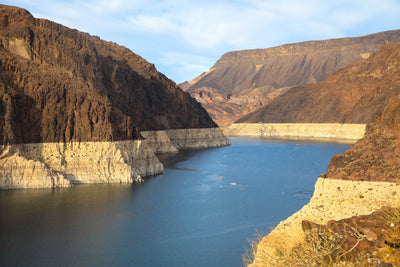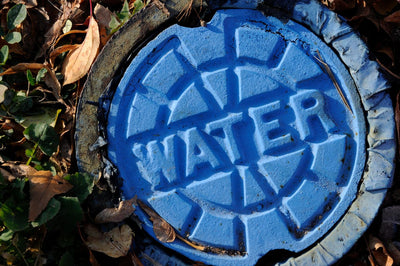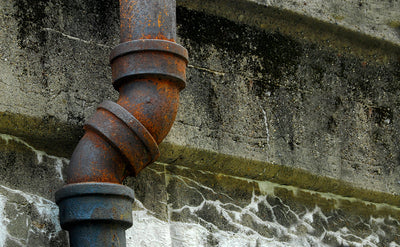Water Quality InformationWritten By Actual Experts
RSSHidden Effects of Drought on Drinking Water

Infrastructure Bill Update: How Are PFAS Addressed?

Analies Dyjak, M.A. & Emily Driehaus
Conversations around infrastructure have been the major political theme of 2021. The U.S. unfortunately has both outdated infrastructure and outdated laws when it comes to ensuring that Americans have access to safe drinking water. The recent proposals provided by the Biden Administration and Congress aim to update existing drinking water and wastewater regulations, but what about addressing newer unregulated contaminants? Over 200 million Americans drink water contaminated with a cancer-causing chemical called Per and Polyfluoroalkyl Substances or PFAS. How do the new infrastructure bills plan to address PFAS?
The Drinking Water and Wastewater Infrastructure Act
The Senate recently passed a $35 billion infrastructure bill to address nationwide water and sanitation updates. The Drinking Water and Wastewater Infrastructure Act includes reauthorizations for existing legacy programs and important new grants for necessary infrastructure improvements. The Senate’s bill proposes a significantly smaller budget than the President’s $111 billion water infrastructure allocation under the American Jobs Plan. Key sections of the Senates’ bill include; additional assistance and subsidies to disadvantaged communities, $500 million for the Lead Reduction Grant program, funding for voluntary lead testing in schools, and resiliency grants for water systems susceptible to the impacts of climate change. Check out a full list of key provisions by clicking here.
How Do New Infrastructure Bills Propose to Address PFAS?
It’s impossible to talk about infrastructure without highlighting harmful PFAS chemicals and the communities across the country grappling with how to address them. The most significant discrepancy between President Biden’s infrastructure plan and the Senate’s iteration is the explicit mention of PFAS chemicals. The President’s plan explicits allocates “...$10 billion in funding to monitor and remediate PFAS in drinking water…” whereas the Senate’s version fails to mention PFAS once. State’s will be able to decide how they want to use federal funds, but the explicit mention reinforces how pressing of an issue PFAS contamination has become in the U.S.
PFAS Action Act of 2021
As more evidence shows the negative effects of PFAS on human health, a bipartisan bill introduced in the House of Representatives aims to tackle PFAS pollution in drinking water and air. Michigan Representatives Debbie Dingell and Fred Upton introduced the PFAS Action Act of 2021 in April after an earlier version of the bill passed the House in January 2020 but was blocked by Sen. Mitch McConnell in the Senate.
What’s In The Bill?
If passed by Congress and signed into law, the PFAS Action Act of 2021 would require the EPA to take regulatory action on PFAS contamination in drinking water. These actions include establishing a national drinking water standard for two of the most common PFAS chemicals, perfluorooctanoic acid (PFOA) and perfluorooctanesulfonic acid (PFOS). These chemicals would also be designated as hazardous substances.
PFOA and PFOS are two of the most prevalent PFAS chemicals, but there are still others that have contaminated drinking water and lead to health problems. The bill would require the EPA to determine whether to add other PFAS chemicals to the hazardous substances list within five years. PFOA and PFOS would also be added as air pollutants with more PFAS chemicals potentially added as determined by the EPA.
The bill would give the EPA the power to put limits on the amount of PFAS that can be released during industrial processes. Wastewater treatment facilities and other water utilities would also be given $200 million annually to treat water contaminated with PFAS.
Current Federal PFAS Regulations
Under the Biden administration, the EPA has launched new initiatives to research PFAS contamination in the environment to gain a better understanding of these contaminants. EPA Administrator Michael Regan announced an EPA Council on PFAS in April, which would work with local governments to protect citizens against PFAS contamination. The EPA has also issued a health advisory for PFOA and PFOS. These health advisories are meant to inform the public and governments about these PFAS chemicals and provide recommendations, but they are not actually enforceable.
Some states have enacted their own PFAS regulations due to the lack of current federal regulation. For example, Michigan adopted PFAS regulations last summer that are stricter than the EPA’s guidance set forth in health advisories. If passed, the PFAS Action Act of 2021 would establish the first federal regulations on PFAS in drinking water and the environment.
What’s Next For The PFAS Action Act of 2021?
The bill has been reported by the House Committee on Energy and Commerce and is set to be scheduled for a vote. The bill’s co-sponsors are optimistic about the vote in both houses of Congress, as both have a Democratic majority. The previous version of the bill was blocked by Mitch McConnell, who controlled the Republican-majority Senate. President Biden campaigned on the promise to enact federal PFAS regulations, so he will likely sign the bill into law if it is passed by both houses. However, regardless of the bill’s status, The National Law Review expects federal PFAS regulations to be enacted by the end of this year.
Our Take:
All drinking water infrastructure improvements must include funding to address PFAS chemicals in water. Period. An estimated 200 million Americans drink PFAS-contaminated water on a daily basis. With this comes an increased risk of cancer, an increased risk of miscarriage and other reproductive effects, and a long list of other negative health outcomes.
Other Articles We Think You Might Enjoy:Yale: PFAS Increase Risk of Miscarriage by 80-120%
Does Your Water Filter Remove PFAS?
PFAS: Everywhere We Look We Find It
How Do Droughts Affect Your Drinking Water?

Emily Driehaus | Science Communication Intern
**Updated 6/30/2022 to include latest updates
The ongoing drought in the western United States has severely depleted water supplies and left many states with water shortages. It's been going on for so long that it's now being called "aridification" in certain areas. Water restrictions have been implemented in parts of California and other western states. The lack of water can have an impact on both drinking water quality and water infrastructure.
Droughts and Water Supplies
The most apparent impact of a drought is the loss of water resources due to the lack of precipitation. An increase in temperature can also speed up the rate of evaporation of water from water supplies. This combination of factors can lead to drought conditions like what is currently being seen in the western U.S. Both natural bodies of water and human-made reservoirs are being depleted at alarming rates, leading to water shortages and restrictions.
How Can Droughts Impact Water Quality?
A U.S. Geological Survey study found that droughts may lead to elevated levels of naturally occurring arsenic in private wells and groundwater, and that the longer a drought lasts, the higher the probability of arsenic concentrations that exceed EPA’s standard for drinking water. Arsenic is naturally occuring in bedrock and sediments around the world and is commonly reported in private wells. Continued exposure to arsenic from drinking water is associated with an increased risk of several types of cancers and other adverse health effects.
A lack of rainfall can lead to reduced flow of rivers and streams, causing stagnation. Rainfall and other precipitation helps to keep rivers and streams flowing, but this stagnation from a reduced flow can lead to a buildup of pollutants. Microorganisms and viruses can contaminate stagnant water and can be transmitted through both drinking water and water used for watering crops. People who use private wells for drinking water are also more susceptible to these contaminants, as there is little flow during a drought. Additional water quality impacts during a drought include; turbidity, taste and odor, pathogen concerns, and challenges in managing disinfection byproducts (DBPs).
Impacts on Water Infrastructure:
The low water supply caused by droughts can have an impact on water systems, especially smaller systems. Poor water quality can affect a treatment facility’s ability to meet acceptable drinking water standards. This loss in water pressure can lead to boil-water advisories, which can add to the heat that often accompanies drought. Older pipes can also exacerbate water loss during a drought due to leaks.
Future Considerations
With climate change increasing the frequency and severity of droughts, the EPA is looking to help communities with drought resiliency. These efforts include installing water-efficient plumbing, such as low-flow toilets and showerheads that conserve water. Encouraging water reuse is also part of these efforts. For example, using water from a shower to water plants could be part of these efforts. In addition, many states have begun programs to encourage or require drought-tolerant plants and landscaping be installed in place of lawns. In fact, for each square foot of grass removed, homeowners save an average of 44 gallons of water a year. As climate change exacerbates the impacts of droughts, these water conservation efforts will become increasingly important.
How Do I Prepare for Water Shortages in a Drought?
According to the USGS, preparation before a drought should focus on water conservation. Replacing leaky plumbing and installing low-flow fixtures can conserve water in the long run, especially during a drought. During a drought, the Red Cross recommends not pouring water down the drain when it could be used for another purpose, such as watering plants. Conserving as much water as possible will allow for more water from faucets to be used for drinking during a drought.
Other Articles We Think You Might Enjoy:Plastic pipes are polluting drinking water systems after wildfires – it's a risk in urban fires, too
How Do Hurricanes Affect Your Drinking Water?
How Are Public and Private Water Systems Susceptible To Temporary Water Outages?
Water Infrastructure and Cybersecurity

Emily Driehaus | Science Communication Intern
United States infrastructure, including water systems, is increasingly susceptible to cyber attacks meant to steal information, disrupt vital processes or potentially harm the public. Investment in cybersecurity for water infrastructure is necessary to prepare for digital threats and protect the public in the event of an attack.
Cyber Threats to Infrastructure
The recent Colonial Pipeline hack has ignited a national conversation about cybersecurity in critical infrastructure in the United States. This past Tuesday, the head of the Colonial Pipeline, Joseph Blount, told lawmakers that hackers were able to get into the system using a single stolen password. The hack led to days of increased gasoline prices and panic buying, causing fuel shortages in some areas. While these hackers targeted oil infrastructure, water systems are not exempt from the threat of cyber attacks and are at risk of falling victim to hacks that put the security and health of citizens at risk.
Case Study: Oldsmar, Florida
One of the most recent cyber attacks on water infrastructure in the U.S. occurred on February 5, 2021, in Oldsmar, Florida. A hacker was able to access the controls to a water treatment plant and attempted to increase the amount of sodium hydroxide in the water. The sodium hydroxide level, which is used to prevent corrosion of lead pipes, was set to increase from 100 parts per million to 11,100 parts per million before an employee recognized the intrusion and set the level back to normal. No one was harmed and no contaminated water made it out of the treatment plant, but the attack highlights the vulnerability of water infrastructure in the U.S., especially as more systems are connected to the internet and accessible via remote access software.
Protocol for Cybersecurity in Water Systems
The EPA and American Water Works Association have both released guidance for public water systems to encourage preventative action before a cybersecurity threat is realized. Their recommendations include robust IT practices and cybersecurity training for all employees in order to recognize a threat before it becomes a major issue. However, most public water systems in the U.S. serve less than 3,300 people, making strong cybersecurity difficult and costly to achieve.
Government Investment in Cybersecurity
The Drinking Water and Wastewater Infrastructure Act of 2021 includes cybersecurity as part of the bill’s investment in water infrastructure. Introduced by Sen. Tammy Duckworth, the bill would appropriate $25 million for cybersecurity projects in water infrastructure per fiscal year from 2022 through 2026. The Biden administration has endorsed the bill and the inclusion of cybersecurity as a necessary part of infrastructure investment. The bill also has bipartisan support and passed the Senate on April 29, 2021. This allocation of funds highlights the importance of cybersecurity measures for water systems as digital threats continue to evolve with rapidly changing technology.
Our Take
Infrastructure cybersecurity is almost entirely out of the public’s control, making ransomware and cyberattacks even more frightening. The best way to protect yourself and your family from potential attacks is to contact your legislators to advocate for stronger cybersecurity laws and infrastructure improvements.
Other Articles We Think You Might Enjoy:The American Jobs Plan To Allocate $111 Billion To Water Infrastructure Improvements
BPA and Phthalates: Are These Two Endocrine Disruptors in Your Water?
What You Need To Know About NRDC's Latest Nationwide Lead Report
American's Can't Afford Their Water Bills







